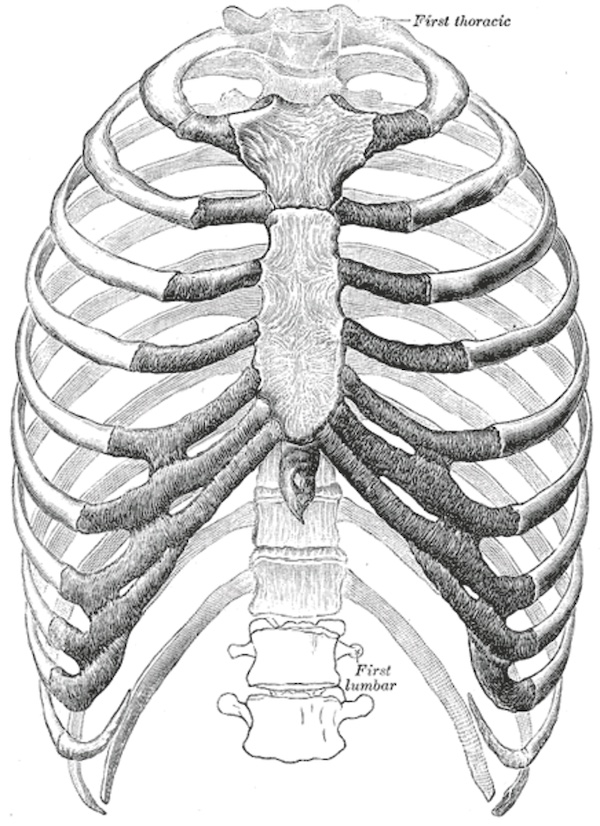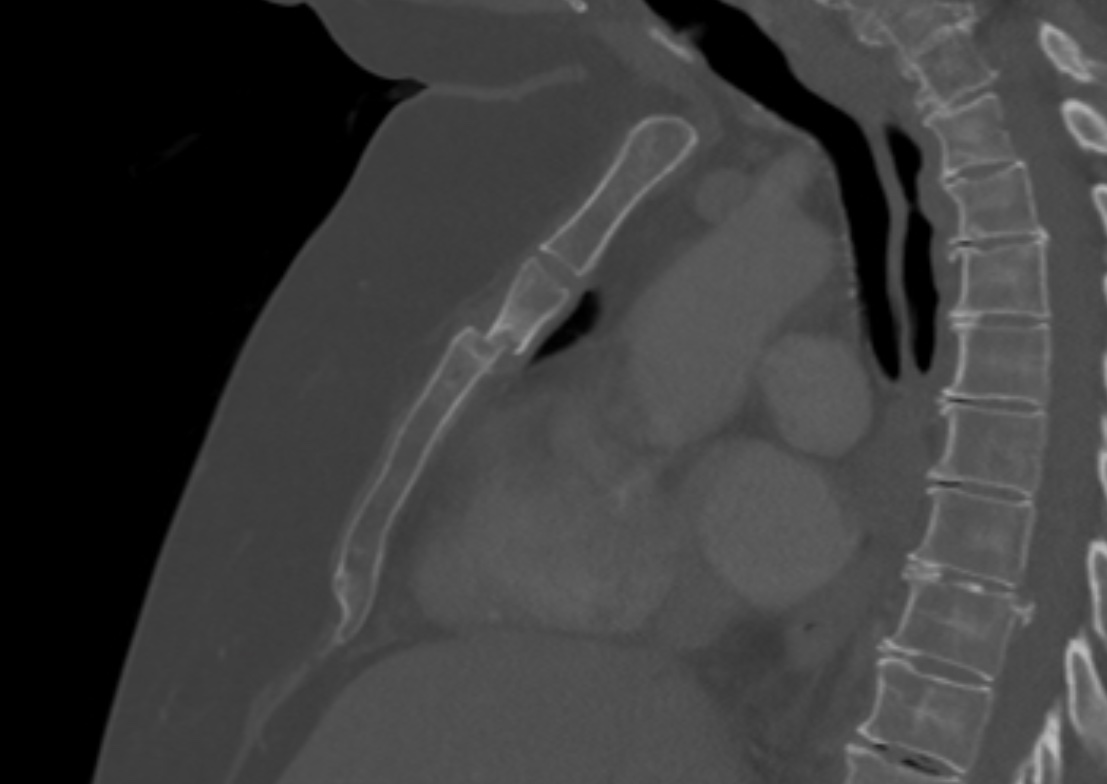Sternal Fracture
Sternal Fracture
David Ray Velez, MD
Table of Contents
Background
Anatomy
- Manubrium – Upper Quadrangular Portion
- Joins the Clavicle and Upper 1.5 Ribs
- Body (Gladiolus) – Middle Longest Portion
- Attachment of the Pectoralis Major
- Articulates with the Majority of the True Ribs
- Xiphoid Process – Inferior Tip
Fracture Site
- Body: 55.8% – Most Common
- Manubrium: 31.7%
- Body and Manubrium: 12.5%
Most Commonly Caused by Blunt Anterior Chest Wall Trauma and Deceleration Injuries
Motor Vehicle Crash (MVC) is the Most Common Cause (68%) – Increased Incidence Since the Introduction of Seat Belt Laws Requiring Shoulder Restraints
Can Be Caused by Cardiopulmonary Resuscitation (CPR) – 18% Incidence in One Autopsy-Based Study
Mortality
- Isolated Sternal Fracture: 0.4-3.5%
- Polytrauma: 3.8-10.4%

Sternum
Presentation and Diagnosis
Significant Force Required to Fracture and the Majority (73.6%) Have Polytrauma with Multiple Injuries
Most Common Associated Injuries
- Rib Fracture (57.8%) – Most Common
- Lung Contusion (33.7%)
- Pneumothorax (22.0%)
- Vertebral Fracture (21.6%)
- Lumbar Vertebrae Fracture (16.9%)
- Concussion (3.9%)
- Blunt Cardiac Injury (3.6%)
Sternal Fracture Alone Does Not Predict the Presence of Blunt Cardiac Injury (BCI) – Previously Believed to Be – *See Blunt Cardiac Injury (BCI)
Presentation
- Chest Pain – Worse with Movement, Deep Breathing, or Cough
- Clicking Sensation with Movement
- Shortness of Breath
- Swelling or Ecchymosis
- Palpable Deformity or Crepitus
Diagnosis
- CT is the Standard Diagnostic Evaluation
- Generally Best Seen on Sagittal Imaging and May Be Missed if Looking at Axial Images Alone
- Chest X-Ray Has Low Sensitivity
- AP: 50%
- Lateral: 70%
- US Has Similar Sensitivity to Plain Radiography

Sternal Fracture
Treatment
Primarily Treated by Nonoperative Management
- Multimodal Analgesia – *See Multimodal Analgesia
- Pulmonary Hygiene – *See Pulmonary Hygiene (Pulmonary Toilet)
Most Isolated Sternal Fractures Heal Spontaneously with Pain Lasting an Average of 10.9 Weeks
Surgical Stabilization (Open Reduction and Internal Fixation/ORIF)
- Rarely Performed
- Indications for Surgical Stabilization are Poorly Established Compared to Rib Fractures
- Potential Indications:
- Visible Deformity
- Loss of Sternal Continuity
- Complete Displacement
- Sternomanubrial Joint Dislocation/Fracture
- Persistent Mobility/Clicking
- Uncontrolled Pain
- Chronic Pain or Nonunion
- Generally Performed Using Titanium Plates
